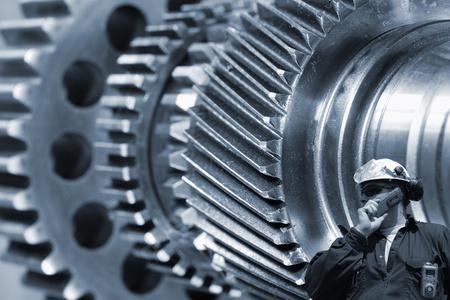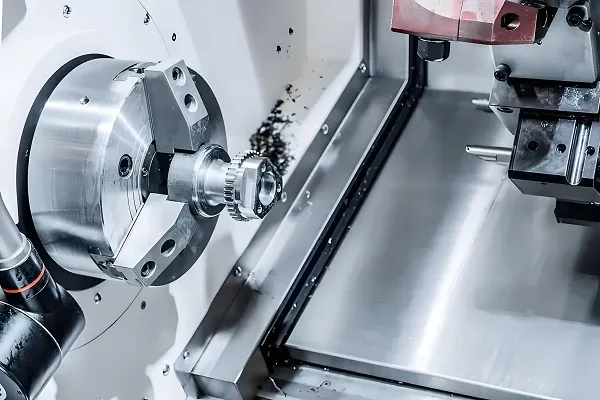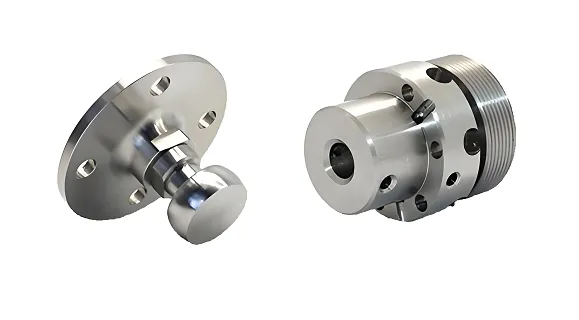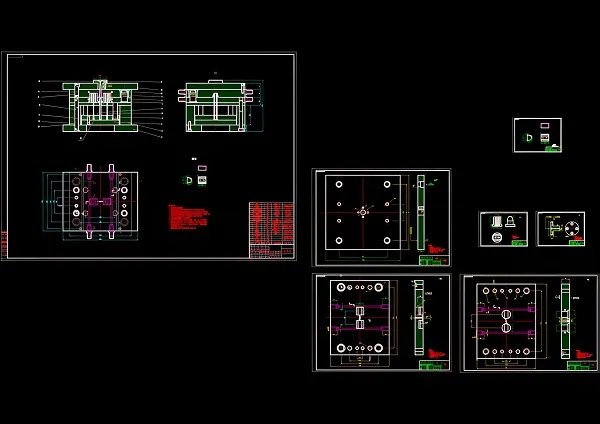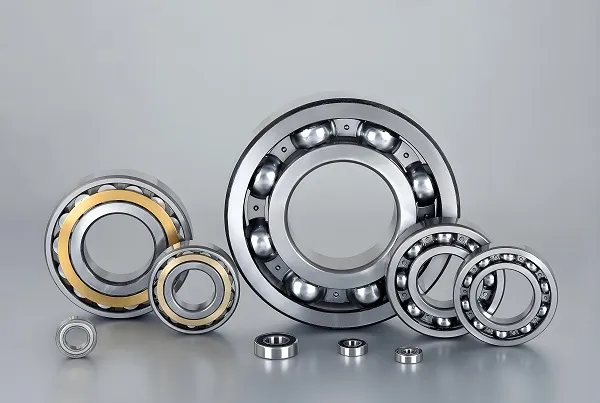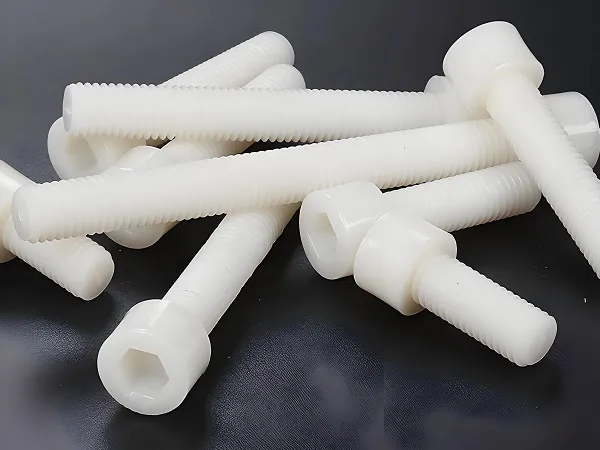Precision components are high-accuracy parts engineered to tight tolerances (often ±0.001mm to ±0.01mm) for critical applications where dimensional consistency and performance reliability are paramount. These components—ranging from micro-scale gears to large structural fittings—enable the smooth operation of complex systems by ensuring precise interactions between parts. Custom precision components are tailored to unique design specifications, material requirements, and functional needs, serving as essential elements in advanced machinery, electronics, and aerospace systems.
1. Why Custom Precision Components
Standard off-the-shelf components rarely meet the exacting demands of specialized equipment, which often require non-standard dimensions, unique geometries, or compatibility with custom assemblies. Custom precision components solve this by delivering precise fits for proprietary systems—whether a 0.1mm-diameter pin for medical devices or a large aerospace bracket with complex contours—that generic parts cannot provide.
Customization enables optimization for extreme conditions: high-temperature resistance for turbine components, corrosion resistance for marine hardware, or low-friction surfaces for precision bearings. For industries with strict regulations (aerospace, medical), custom components can be engineered to meet certifications (AS9100, ISO 13485) and performance benchmarks (fatigue strength, thermal stability). Additionally, custom precision manufacturing allows for integration of multiple features (threads, holes, coatings) in a single part, reducing assembly steps and minimizing failure risks in high-reliability systems.
2. Precision Components Processing Technologies
- CNC Milling (3-Axis to 5-Axis): Achieves complex 3D geometries with sub-micron precision, ideal for parts with intricate features (contoured surfaces, pockets) in materials like steel, aluminum, or titanium. 5-axis systems handle multi-sided parts without repositioning, ensuring uniform accuracy.
- CNC Turning & Swiss Turning: Produces cylindrical parts (shafts, pins, bushings) with tight concentricity (≤0.002mm). Swiss turning, used for small-diameter parts (0.5mm–20mm), minimizes deflection for ultra-precise micro-components.
- EDM (Electrical Discharge Machining): Uses electrical discharges to cut hardened materials or intricate shapes (micro-slots, fine gears) with no tool contact, ensuring precision in heat-treated or brittle materials (carbide, ceramics).
- Grinding (Surface, Cylindrical, Centerless): Finishes surfaces to Ra 0.02μm and tolerances of ±0.0005mm, critical for bearing races, valve seats, or other parts requiring minimal friction and maximum wear resistance.
- Lapping & Polishing: Achieves mirror-like finishes (Ra < 0.01μm) and flatness within 0.001mm, used for optical components, seal faces, or precision gauges where surface quality directly impacts performance.
3. Precision Components Processing Flow
- Design & Engineering: Collaborate with clients to define specifications (dimensions, tolerances, material properties) and environmental constraints (temperature, load, corrosion). Use CAD/CAM software and FEA simulations to optimize part geometry and stress distribution.
- Material Selection: Choose materials based on application needs—high-alloy steels for strength, titanium for weight reduction, ceramics for high temperatures, or engineering plastics (PEEK) for chemical resistance.
- Prototype Development: Produce prototypes using 3D printing (for form testing) or CNC machining (for functional validation) to verify fit, performance, and manufacturability. Adjust designs based on prototype feedback.
- Precision Machining: Select appropriate technologies (milling, turning, EDM) to produce parts, with in-process inspections using coordinate measuring machines (CMMs) to ensure adherence to tolerances.
- Heat Treatment: Apply processes like annealing (stress relief), quenching (hardening), or carburizing (surface hardening) to enhance mechanical properties (tensile strength, hardness).
- Surface Finishing: Apply coatings (PVD, electroless nickel) for corrosion resistance, lubricity, or wear protection; or polish/lap surfaces to meet roughness requirements.
- Final Inspection: Conduct comprehensive testing, including dimensional verification (CMM, optical comparators), material analysis (spectroscopy), and performance validation (pressure, fatigue testing) to ensure compliance with specifications.
4. Precision Components Materials
-
- Stainless Steel (316, 17-4 PH): Offers corrosion resistance and strength, used in medical devices, marine components, and aerospace fittings.
-
- Titanium Alloys (Grade 5, Grade 2): Combines high strength-to-weight ratio with biocompatibility, ideal for aerospace structures and medical implants.
-
- Tool Steels (D2, H13): Provides hardness (58–62 HRC) and wear resistance, suitable for dies, cutting tools, and high-stress components.
-
- Aluminum Alloys (6061-T6, 7075-T6): Lightweight with good machinability, used in electronics, automotive, and aerospace for weight-critical parts.
-
- PEEK (Polyether Ether Ketone): Heat-resistant (up to 260°C) and chemical-resistant, used in medical and aerospace components requiring high performance.
-
- POM (Acetal): Offers low friction and dimensional stability, suitable for precision gears, bearings, and sliding components.
-
- Alumina Ceramic: High hardness and temperature resistance, used in electrical insulators and high-wear applications.
-
- Carbon Fiber Composites: High strength and low weight, used in aerospace and racing components for structural support.
5. Precision Components Applications
- Aerospace & Defense: Turbine blades, aircraft structural brackets, and missile guidance system parts, machined from titanium or high-alloy steels to withstand extreme temperatures and loads.
- Medical Devices: Surgical instrument components, implantable parts (bone screws, pacemaker housings), and diagnostic equipment parts, using biocompatible materials (titanium, PEEK) with sub-micron precision.
- Electronics & Semiconductor: Lead frames, connector pins, and wafer handling components, requiring tight tolerances (±0.001mm) to ensure electrical conductivity and alignment.
- Automotive (High-Performance): Racing engine valves, fuel injection components, and transmission parts, where precision reduces friction and improves efficiency.
- Optics & Photonics: Lens mounts, mirror holders, and laser components, machined to ultra-flat surfaces (≤0.001mm) to maintain optical alignment.
- Industrial Machinery: Precision bearings, hydraulic valve spools, and robotic arm joints, ensuring smooth operation and long service life in automated systems.
6. Precision Components Performance Additions
- Surface Coatings: Titanium nitride (TiN) or diamond-like carbon (DLC) coatings reduce friction and wear, extending component life in high-contact applications (bearings, gears).
- Heat Resistance Treatments: Ceramic coatings or alloying elements (molybdenum, tungsten) enhance performance in high-temperature environments (turbines, furnaces).
- Corrosion Protection: Passivation (for stainless steel), anodizing (for aluminum), or plating (nickel, chrome) prevents degradation in moist or chemical-rich environments.
- Dimensional Stability Enhancements: Stress-relief annealing or cryogenic treatment minimizes post-machining deformation, critical for parts operating across temperature ranges.
- Lubrication Integration: Solid lubricant inserts (graphite, PTFE) or oil-impregnated porous structures reduce the need for external lubrication in hard-to-access components.
7. Precision Components Common Questions
- What is the tightest tolerance achievable for precision components?
With advanced grinding and EDM, tolerances as tight as ±0.0001mm (0.1μm) are possible for small features, though typical precision parts range from ±0.001mm to ±0.01mm depending on size and material.
- How do material choices affect precision machining?
Hard materials (titanium, ceramics) require slower cutting speeds and specialized tools but offer better dimensional stability. Soft materials (aluminum, plastic) machine faster but are more prone to deflection, requiring careful fixturing.
- What is the typical lead time for custom precision components?
Simple parts with standard materials take 2–4 weeks; complex parts (5-axis machining, heat-treated materials) require 6–10 weeks. Prototypes can be delivered in 1–2 weeks using rapid machining technologies.
- How are precision components inspected for quality?
Inspection tools include CMMs (for 3D dimensional checks), optical comparators (for 2D profiles), surface profilometers (for roughness), and hardness testers. Critical parts may undergo X-ray or ultrasonic testing for internal defects.
- Are custom precision components cost-effective for low-volume production?
Yes—while tooling and setup costs are higher, the elimination of assembly errors and improved performance often offset expenses, especially in high-reliability applications (medical, aerospace) where failure costs are significant.
Need custom precision components for your specialized equipment? Whether you require micro-scale parts for medical devices, high-strength aerospace components, or ultra-precise industrial fittings, we can deliver solutions tailored to your exact specifications. Share your design details, material preferences, and performance requirements in the comments, and our team will provide engineering insights, cost estimates, and production timelines. Let’s build components that define precision.
